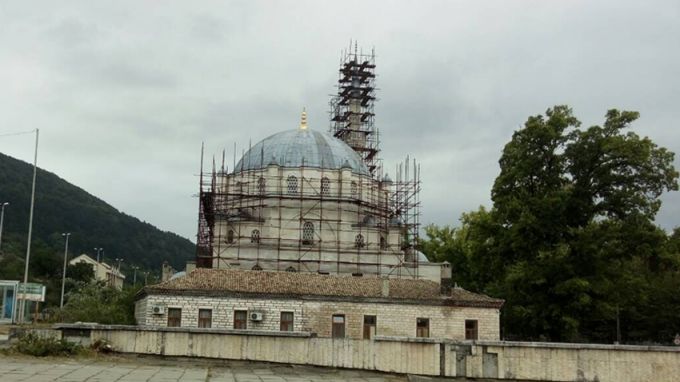 6
6
Shumen is a town known as one of the centers of the Bulgarian National Revival with its cultural and spiritual life, and where the spirit of past times can still be felt. If you go along the cobblestone street of "Tsar Osvoboditel" towards the Tombul Mosque, you will pass through the museum houses of some of the most prominent Bulgarian intellectuals and persons from the Revival, such as Panayot Volov, Lajos Kossuth, Pancho Vladigerov, Dobri Voynikov. Shumen is the birth place of Metropolitan Kliment of Turnovo (with secular name of Vassil Drumev), as well as the first mufti of Muslims in Bulgaria - Mehmet Muhyiddin. The mosque is located in the western part of the city, where the city center used to be in the past.
“To every thing there is a season, and a time to every purpose under the heaven... There is a time to break down, and a time to build up;" One starts thinking about these words from the Book of Ecclesiastes when approaching the Tombul Mosque - a Muslim temple that during the Bulgarian National Revival period was one of the most important religious, cultural and educational centers of Muslims in these lands. Besides being one of the symbols of Shumen, it is also a national monument of culture, part of the 100 National Tourist Sites of Bulgaria, but because of ongoing restoration work in recent years, the number of tourists visiting the mosque has decreased significantly.Tombul mosque was built in 1744 by benefactor Sheriff Halil Pasha and the mosque was named after him, but due to its round dome, which in Turkish is known as "tambul", the population started calling it "Tombul Mosque". The architectural style of the temple is influenced by the oriental “tulip” architectural style that originated in the early 18th century. The style is characterized by the presence of elements of the French Baroque. All parts of the architectural complex are included in a joint composition and are connected through patios. In the prayer hall one enters through an open entrance with high arcades in Moorish style. In his book “The Secrets of Tombul Mosque” Prof. Dobrin Dobrev of the Shumen University writes: "Tombul mosque is often described as one of the largest Muslim religious buildings on the Balkan Peninsula. The presence of a rich library that contains 800 manuscripts and 1500 old books is also traditionally pointed out."
In 2004, a study concerning the renovation of the mosque was carried out. In the period 2005-2008, some emergency activities on strengthening the temple's construction were carried out. Because of lack of funds, the restoration project was paused until 2016 when it was re-launched thanks to donations. Work includes a construction stage and a stage of artistic restoration.
"Tombul Mosque, according to me, in comparison to all mosques I have seen, excluding those under construction in the Middle East, has the richest decorations," says head of the artistic restoration stage Lyubomir Vodenicharov and adds:
"The most complicated thing in this mosque is that there are two periods of decoration exposed. One is the original one from the middle of the 18th century. And the other is a later one from the 19th century. This was necessary because the first decoration was linked to the aesthetics of Alevism. In the 19th century, due to some faults and the aesthetic considerations mentioned, the decoration was overwritten, but already with local elements of the Turkish Baroque used. We have reached an agreement that when a layer of the first period was discovered, it would be restored, and when a layer of the second period was discovered, it would be restored, too. We try to make sure that there is a distinct difference. Everything in the decoration is impressive because it is all hand-painted - no stencils were used."
English: Alexander Markov
Photos: Uzlem Tefikova and Radio ShumenWith more 40 thousand archaeological sites and artifacts, Bulgaria is a true open-air museum. In terms of the number of finds, this country ranks third in the world after Italy and Greece. From the Neolithic, eight millennia ago, to..
NATO tests new 'no U.S.' mission model in Balkans NATO is testing its ability to deploy rapidly across Eastern Europe - without direct US support - as Washington shifts its approach to European defence and the war in Ukraine, the Associated Press..
Love blooms with renewed vigour every year on 14 February! Valentine's Day is increasingly being celebrated in Bulgaria as a holiday that inspires lovers to share beautiful moments together. Traditions include the exchange of cards, gifts and romantic..
World Radio Day - 13 February, this year is dedicated to climate change. The choice is no coincidence—2025 has been identified by the Paris Agreement as a..
Love blooms with renewed vigour every year on 14 February! Valentine's Day is increasingly being celebrated in Bulgaria as a holiday that inspires lovers to..
With more 40 thousand archaeological sites and artifacts, Bulgaria is a true open-air museum. In terms of the number of finds, this..

+359 2 9336 661
